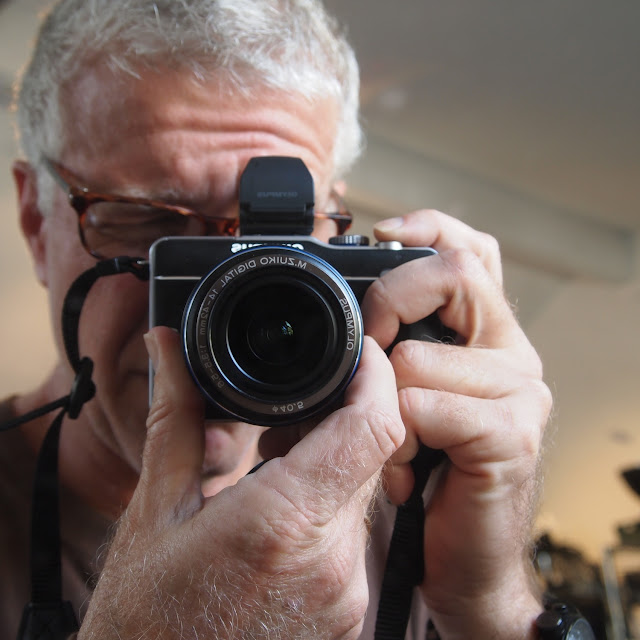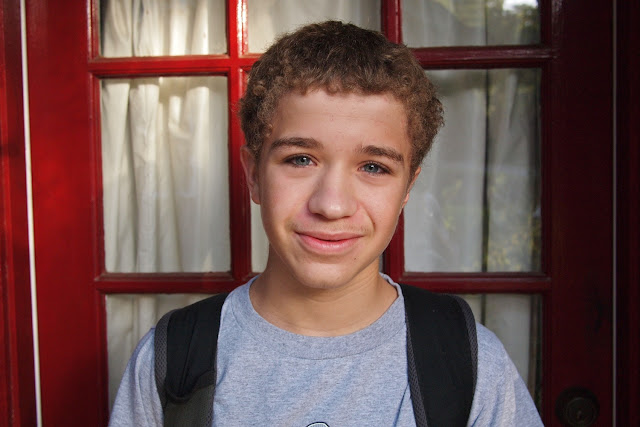This is one of the first self portraits I put up on the blog. Shot in a convex mirror on the corner of a parking garage in downtown Austin in 2009. An Olympus EPL1 in my hands.
The nicest thing about my career as a photographer was being available to go to my kid's school, to all his soccer games, all his swim meets, all his cross country meets, his martial arts practices and even the saturday mornings when he would drag me (he was five at the time) to Toys R Us for the weekly Pokemon card game matches. Screw work. Spending time with your kids is the greatest gift you can give yourself. It may also turn out to be good for the kid.
I'm sure I could have made twice as much money if I worked a relentless corporate job but I'd gladly trade all the money to live my life exactly the way I just spent the last 19 years doing it.
No regrets and no big projects I missed out on.
(above photo taken at the Zilker Kite Festival by Ben Tuck)
With Ben now away at college for his sophomore year it's me and the dog holding court at the studio every day. We entertain each other pretty well and when we get bored we send prank texts to Ben. The Studio Dog is getting as grey as I am. It's well earned.
In the last six years I've written five books, taught lots of classes, written over 2,400 blog posts and I still had time to do hundreds and hundreds of photographic assignments in cities across the country. If you keep moving you stay skinny. That, and a good dose of daily swim practice.
The image just above was taken during a lighting workshop I did at the University of Texas at Austin for the Texas Photographic Society. I'm still engaged with classes at UT and ACC. Maybe I have something to give back. Maybe I just tell entertaining stories.
The blog has allowed me to meet interesting photographers. Here I was a model in a lighting workshop run by Will Crockett. Will took this photograph of me grinning like a fool.
I think that being a freelance photographer can be a very lonely profession. That's why this photograph I took in a Paris Metro station, with an old Leica M3 and a 50mm Summicron, resonates so acutely with me. But I have to thank friends (and blog readers) like Frank, Keith, Bernard, Andy, Will, James, Paul and many others for making sure I showed up for lunches, coffee in the late afternoons, and the occasional excessive BBQ adventure. It's the connection between so many people that makes this blog so worthwhile for me.... It's all about connecting with people who are both like me and not like me----in a good way.
The love of my life and the glue that holds everything together for me and Ben is Belinda.
Wise, kind, smart and ...... pretty much perfect. She even takes great care of Studio Dog.
I've had lots of great photographic assistants over the years but none so smart, beautiful, creative and intuitive as Renae. She was so much smarter than me it was embarrassing.... I still rue the day she left to pursue her career in NYC and LA.
How many pairs of glasses does one photographer need?
I've come to believe that the reason so many people come here to read the blog is that in a uniform world they enjoy encounters with eccentric people. I've always tried to be as normal as possible but it rarely works convincingly. Why else the fascination with orphaned old tech?
About a half an hour a day makes for a disciplined engagement with the blog. More time spent moderating comments than actually writing stuff down.
It was a Canon Canonet QL17 that dragged me kicking and screaming into a life (mis)spent taking pictures and hanging out drinking coffee. It was Tri-X that kept me honest for a couple of decades.
Photo by Ellis Vener.
It was my success with the article I wrote about Leica rangefinders, on Photo.net that eventually persuaded me to start writing a regular blog. That article, written in 2000, still has legs sixteen years later. That's something a writer can be proud of...
Damn. Those were great cameras. And lenses.
Photo of me taken by Will van Overbeek with the camera and lens just above.
And a sunburned Belinda with the same combination.
Go ahead. Try shooting with a Leica rangefinder. You will be drawn to the dark side.
It's a powerful and addictive combination of the world's best glass and the world's most logical camera.
I still have thousands and thousands of pages of slide to go through and organize. The march of progress is the bane of photographers who survive long enough to regret their lack of earlier organization.
Early, wild, Austin photographer photographed by documentary photographer, Alan Pogue.
Circa 1980. Tell me again how the Strobist community invented off camera flash just a few years ago......
An image that inspired a number of pages in the Novel, The Lisbon Portfolio.
R series Leica always over the shoulder back then.
Ringlight portrait courtesy of Keith Kessler.
I guess photographers deserve their reputation for looking scruffy.
Why cameras should go with you everywhere and why you shouldn't care about correct exposure.
It's one giant continuum.
Thanks for reading all the stream of consciousness blogging I've churned out for the past six years. I've enjoyed having the smartest readers on the web and I've learned a lot from all of you who come by and read and comment and then e-mail me to help me edit my excesses.
A special thanks to my friend, Fred, for watching out for my kid, Ben, while he enjoys college some 2,000 miles away from home. Such a comfort to Belinda and me.
Photograph is not dead or dying, it's just getting started.
I hope you'll stick around for the next 20 million page views and the next 2,400 blog posts.
I'll keep writing if you keep reading.....
Thank you, Kirk





























































